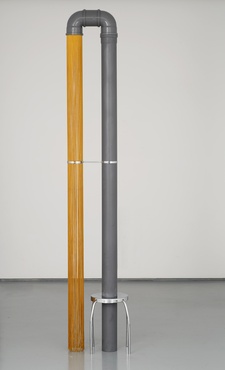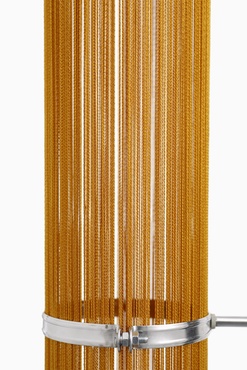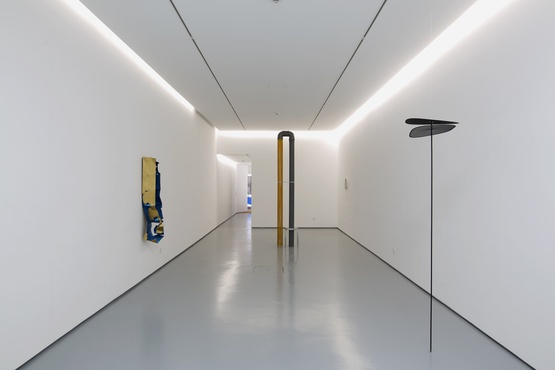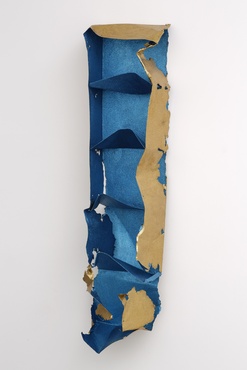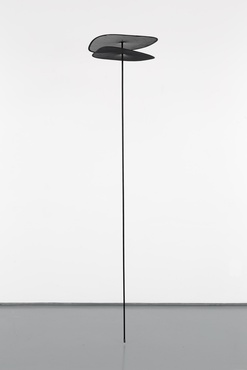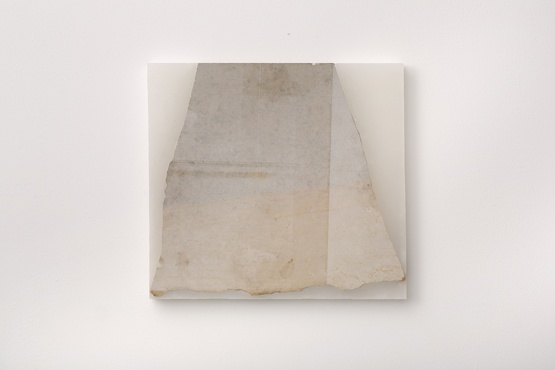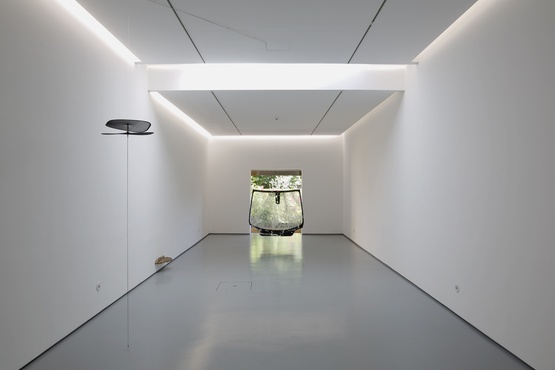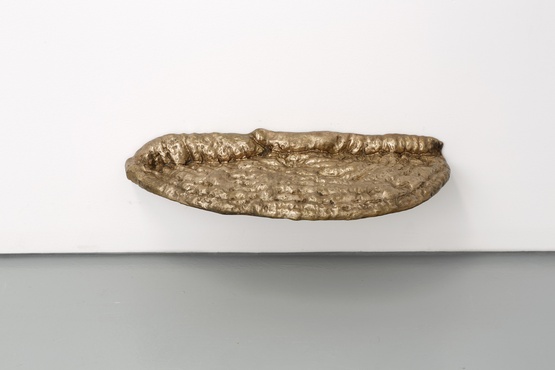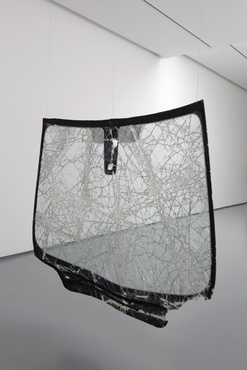In this
exhibition Ana Santos presents several works that surprise us in terms of their
tone, scale and freedom and her precise use of materials organised around a
vertical axis.
The construction
logic underpinning each work echoes the tradition of Japanese haiku poetry - that
brings the physical presence of a vibration to the words. Ana Santos pays
attention to the underlying rationale of each material she uses and manipulates
it until hitting the right note. Nothing more, nothing less. The means of
joining, overlapping, cutting, twisting, transforming the collage into a subtraction.
The operation is based on sweeping, while sewing/cooking together small
accidents. The sweeping action occurs after painstaking attention, thereby
ensuring that the surrounding space is just right. It’s about creating the
right vibration.
How to get it
right? Ensuring that different speeds coincide.
Subtraction is
the decisive operation that always occurs at a later stage, almost at the end
of the finished work. Subtracting becomes a way to breathe. It’s a moment of
suspension and is therefore decisive. The materials need to encounter their
internal stability. We never know what this is before we begin.
PVC, nylon
threads, brass, iron, lead, parasol, ribbons, spinning motor, paraffin,
glitter, limestone, glue, adhesive, glass, plastic, hose, tube, feathers…the
list goes on.
How can we make them all converge? The simple placement
of the objects in space offers us some clues to continue. In this case the eye recognises,
chooses and pinpoints this or that junction, this or that gap between two objects.
Textures, fabrics - the nerves of any material - are taken as bunches, by batches,
or families, and then propped against the wall or arranged on the floor. Above
all it’s necessary to find the right position. Place, dispose, overlap,
counterpose: different ways of proposing durable balances. The elegance lies
therein. They hold together, with precision, in the scale of the flexible possible.
These proposals (let's call them “proposals” for the
time being) harbour an alien naturalness.
Where does this alien naturalness come from? It derives
from the recognition of a principle of action in each material used, i.e. – paying
attention to the timbre of each individual material. They are almost all
pre-fabricated, and twisted until they fulfil their strange nature. And don’t
forget Duns Scotus’ theory that "nature is always curved" – it starts
at one end and doesn’t end at the other. The artist revolved around each work, returned
to it, paying attention to tiny details, adjusting here, trimming over there. Attention
dedicated in concentrating circles. Matryoshka-Matrix. The vertical axis secures
the circular rhythms:
For example, a PVC tube which pierces a metal bench,
parallel to the washer, in the middle of the tube, surrounding a round curtain
of long yellowish strands which hang from the mouth of the tube and almost touch
the floor.
Or two black twirling
translucent parasols that spin parallel to one another, about two inches from
each other, held together by a taped thread that almost touches the ground.
The delicacy that
derives from the acuity of these combinations is due to the fine-tuned
precision of this hot-and-cold method. It implies complete dedication to a task
that can only be achieved through visionary pragmatism. It involves cooking and
sewing, quickly catching long-lasting accidents, cleaning and sweeping to
pursue the right random occurrences. An open outlook - because nature is always curved and we don’t
know when it will catch us.
have you come
to save us haiku poets?
red dragonfly
Kobayashi Issa
Francisca Carvalho
June 2017



